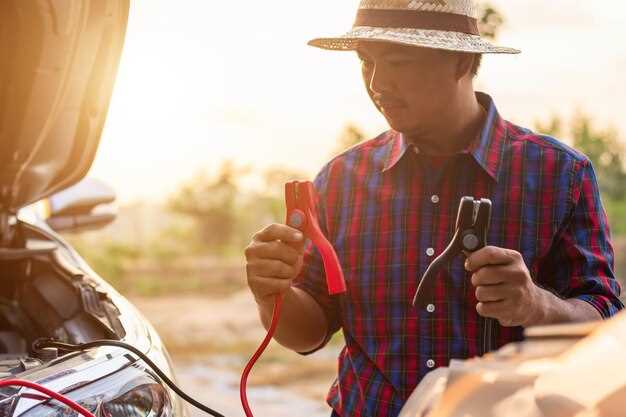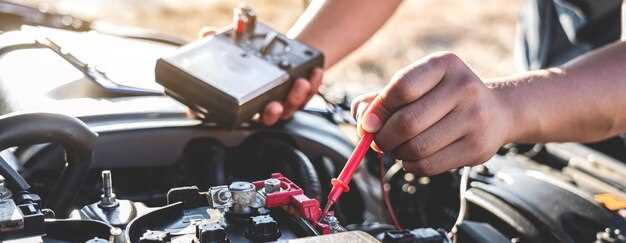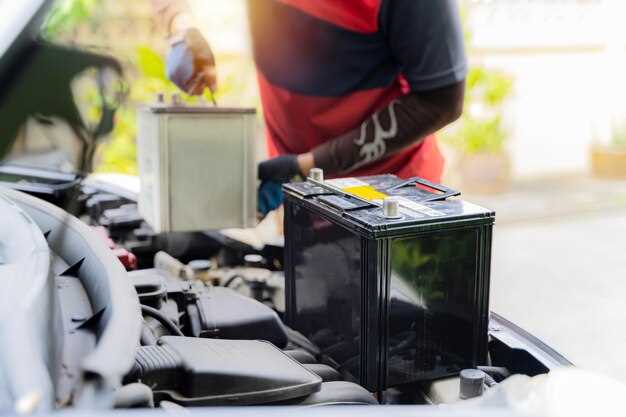
Installing a dual battery setup in off-road vehicles is an essential upgrade for enthusiasts who demand reliability and performance in rugged environments. The unpredictability of off-road adventures can strain a single battery, leading to unexpected failures. A dual battery system ensures that you have a backup power source, providing the necessary energy for both your vehicle and any additional accessories you may be using, such as winches, lights, or communication devices.
The primary advantage of having two batteries is that one can be dedicated to starting the engine, while the other handles the auxiliary power needs. This separation not only enhances the longevity of your vehicle’s starting battery but also allows you to enjoy your off-road experience without the fear of being stranded due to a dead battery. Additionally, a well-designed dual battery setup can incorporate a battery management system, which helps in monitoring battery health and charge levels, optimizing performance during long trips into the wilderness.
In this guide, we will take you through the steps necessary to successfully install a dual battery setup in your off-road vehicle. From choosing the right batteries and components to wiring them together in a safe and efficient manner, this article will equip you with the knowledge needed to enhance your vehicle’s capabilities. Whether you’re a seasoned off-roader or just starting your journey, mastering the dual battery installation will undoubtedly elevate your off-road adventures.
Choosing the Right Batteries for Off-Road Applications
Selecting the appropriate batteries for off-road vehicles is crucial for optimal performance and reliability. Off-road applications require batteries that can withstand harsh conditions, including extreme temperatures, vibrations, and potential shocks from rough terrain.
When choosing batteries, consider the type of battery chemistry. Lead-acid batteries, including AGM (Absorbent Glass Mat) and gel types, are commonly used for off-road setups due to their robustness and lower initial cost. However, lithium-ion batteries are gaining popularity because they are lighter, have a higher energy density, and can provide more power for longer durations.
Capacity is another important factor. Off-road vehicles often rely on auxiliary power for winches, lights, and other accessories. Look for batteries with a high amp-hour (Ah) rating to ensure that they can support these power-hungry devices without depleting quickly.
Cold cranking amps (CCA) are essential for starting vehicles in cold environments. A battery with a high CCA rating ensures that your vehicle will start reliably in low temperatures, which is often a concern in off-road settings.
Additionally, durability and construction should not be overlooked. Look for batteries designed specifically for off-road use, which are typically built with reinforced cases and vibration-resistant features. This will enhance longevity and prevent failures in challenging conditions.
Lastly, verify compatibility with your vehicle’s electrical system. Ensure that the chosen batteries match the required voltage and can be integrated seamlessly into a dual battery setup. This will help prevent electrical issues and ensure all components work efficiently together.
Necessary Tools and Equipment for Installation
To successfully install a dual battery setup in your off-road vehicle, you’ll need a range of tools and equipment. Having the right items on hand will ensure a smooth installation process and reliable performance. Below is a comprehensive list of what you will need:
- Batteries: Choose two batteries that are compatible with your vehicle’s electrical system. Opt for deep-cycle or AGM batteries for optimal performance in off-road conditions.
For the installation process, gather the following tools:
- Wrenches: Adjustable wrenches or socket sets to secure battery terminals and other components.
- Screwdrivers: A set of both flathead and Phillips screwdrivers for various fasteners.
- Cable Cutters: To cut battery cables to the required length.
- Wire Strippers: For removing the insulation from battery cables, ensuring a good connection.
- Multimeter: To check voltage levels and ensure proper battery function.
- Safety Gear: Goggles and gloves to protect yourself during the installation.
Additional equipment you may need includes:
- Battery Terminal Connectors: High-quality connectors to ensure a secure and durable connection between batteries.
- Battery Tray: A sturdy tray or mount to hold the second battery in place safely.
- Fuses: Proper fuses for circuit protection to prevent electrical overloads.
- Battery Isolator: To manage the dual battery setup and prevent discharge of the primary battery.
- Cables: Heavy-duty cables rated for your vehicle’s electrical system to connect the batteries.
By ensuring you have all the necessary tools and equipment listed above, you can streamline the installation of your dual battery system and improve the reliability of your off-road vehicle.
Wiring Configuration for Dual Battery Systems
When setting up a dual battery system for off-road vehicles, the wiring configuration is crucial for ensuring optimal performance and reliability. A proper layout not only supports the additional power demands but also safeguards against potential electrical failures.
Understanding the Basics: Typically, a dual battery setup consists of two batteries–one for starting the vehicle and another for powering off-road accessories. The configuration can vary based on the type of batteries used and the intended application, but a common method is to wire them in parallel.
Battery Connections: In a parallel configuration, connect the positive terminals of both batteries together and the negative terminals together. This setup allows the voltage to remain at 12V while effectively doubling the available amp hours, providing extended power supply for off-road equipment such as lights, winches, and refrigerators.
Incorporating a Battery Isolator: To prevent the starting battery from being drained, implementing a battery isolator is essential. This device allows the secondary battery to charge while the vehicle is running but isolates it when the engine is off. This protection ensures that the starting battery remains charged and ready for ignition, even during prolonged accessory use.
Fusing the System: To enhance safety and prevent damage, it is vital to add fuses in the wiring configuration. Place fuses close to the positive terminal of each battery to protect against short circuits. Choose the correct amp rating based on your accessories’ total power draw to ensure adequate protection while allowing sufficient current flow.
Wiring to Accessories: When connecting accessories to the secondary battery, use heavy-duty wiring to accommodate higher current demands. Ensure that the connections are secure and well insulated to prevent any accidental shorts, especially in the rugged conditions typical of off-road environments.
Testing the System: After completing the wiring configuration, it is important to test the system. Use a multimeter to check voltage levels at both batteries and ensure that the isolator is functioning correctly. Monitor the performance while using off-road accessories to confirm that everything operates smoothly.
Configuring the wiring for a dual battery system carefully will significantly enhance your off-road vehicle’s reliability and capability. By understanding the necessary components and ensuring proper connections, you can enjoy your adventures without the worry of running out of power.
Mounting Options for Dual Batteries in Vehicles
When setting up a dual battery system in an off-road vehicle, choosing the right mounting option is crucial for performance and safety. The primary mounts include the engine bay, truck bed, and custom-made brackets, each providing its own advantages.
Mounting batteries in the engine bay is a popular choice for maximizing space efficiency. This option allows for easy access to terminals and minimizes the length of wiring, which is essential for reducing voltage drop. Ensure that any mounted battery is secured properly to withstand the rigors of off-road driving.
The truck bed is another viable option, particularly for vehicles that may not have enough room under the hood. Installing a dual battery setup in the truck bed can also facilitate the use of larger batteries, providing increased capacity for winches, lights, and other accessories. Utilize a waterproof enclosure to protect the batteries from the elements.
Custom-made brackets or trays can be designed to fit specific vehicle layouts and preferences. This solution offers flexibility in positioning and can be tailored to optimize weight distribution and accessibility. When creating custom mounts, consider utilizing high-quality materials that can withstand vibrations and shocks encountered during off-road adventures.
Regardless of the chosen mounting location, ensure that all connections are secure, and fuses are properly rated to prevent electrical failures. Protecting the batteries from physical damage and ensuring they are easily accessible for maintenance will enhance the reliability of the dual battery system in any off-road situation.
Testing and Troubleshooting Your Dual Battery Setup
Once your dual battery system is installed in your off-road vehicle, it is crucial to ensure that it operates effectively. Testing and troubleshooting your setup can prevent potential issues that may arise in your adventures. Here are some steps to follow for thorough testing and troubleshooting.
1. Visual Inspection
Start with a visual check of your dual battery system. Inspect the following components:
- Battery connections: Ensure that all terminals are clean, tight, and free from corrosion.
- Cables: Look for any fraying or damage on the battery cables.
- Mounting: Check that both batteries are securely mounted to prevent movement during off-road travel.
2. Voltage Testing
Using a multimeter, measure the voltage of each battery. This will help you identify any discrepancies between the two.
- Set the multimeter to the DC voltage setting.
- Connect the positive lead to the positive terminal of the battery.
- Connect the negative lead to the negative terminal.
- Record the voltage reading. A healthy battery should read around 12.6 volts or more when fully charged.
3. Load Test
If the voltage readings are low or one battery appears weaker, conduct a load test:
- Use a battery load tester to apply a load to each battery.
- Monitor the voltage as the load is applied. It should not drop significantly during the test.
- A drop below 9.6 volts indicates that the battery may need replacement.
4. Charging System Check

Test the charging system to ensure that both batteries are receiving adequate charge:
- Run the vehicle and measure the voltage across the terminals of each battery.
- The voltage should read between 13.7 to 14.7 volts while the engine is running.
- If it is lower, check the alternator and related wiring for faults.
5. Troubleshooting Common Issues

If you encounter problems with your dual battery setup, consider the following troubleshooting tips:
- Battery drain: Inspect for parasitic drains. Disconnect all non-essential electrical components and recheck battery voltage.
- Failure to charge: Verify that the isolator or management system is functioning correctly. Replace if necessary.
- Uneven usage: Check that both batteries are connected properly and not short-circuited. A balanced setup helps in even power distribution.
By performing these tests and addressing any issues, you can ensure that your dual battery setup will provide reliable power during your off-road adventures.
Maintenance Tips for Longevity of Dual Battery Systems
Maintaining a dual battery system is crucial for ensuring reliability and longevity, especially in off-road environments. Here are essential tips to keep your batteries in optimal condition:
| Tip | Description |
|---|---|
| Regular Inspection | Check terminals and connections for corrosion or loose connections. Clean terminals with a wire brush and apply a protective spray to prevent corrosion. |
| Voltage Monitoring | Use a multimeter to monitor the voltage of both batteries. Ensure they are within the recommended voltage range to prevent deep discharge. |
| Equal Charge Levels | Regularly balance the charge levels between the two batteries. This can prevent one battery from overworking and extending the lifespan of both. |
| Proper Charging | Utilize a smart charger designed for dual battery setups. This ensures both batteries are charged efficiently without overcharging. |
| Temperature Management | Avoid exposing batteries to extreme temperatures. Install them in a ventilated, shaded area to reduce heat stress and prolong their lifespan. |
| Load Management | Distribute electrical loads evenly between batteries to avoid overloading one battery. This can prevent premature failure and maintain system balance. |
| Inspect Battery Condition | Check battery age and health periodically. Replace batteries that show signs of swelling, leaking, or are significantly degraded to maintain system efficiency. |
By following these maintenance tips, you can ensure your dual battery system performs optimally for a long time, providing the reliability needed for off-road adventures.
